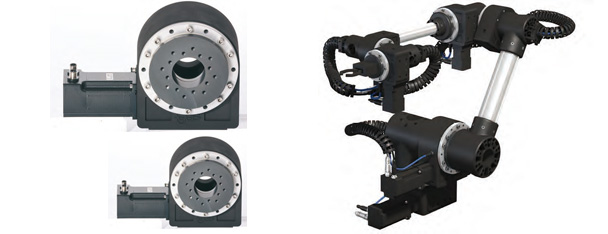The term “robot” conjures up images from myriad science fiction movies, usually of robots trying to destroy humanity. So far, we are safe, at least for the time being. Our present-day robotics technology is creating some clever machines and useful tools, but thankfully, we are still in control.
But what we are in control of is evolving at a rapid rate. The availability of low-cost high-performance processors and peripheral systems is letting us run more sophisticated algorithms for sensing, filtering, extracting useful signals, and precisely controlling motion, temperature, pressure, acceleration, force, intensity, and many more physical effects we can monitor and control.
In addition to the need for higher-end processors and actuators, the integration and fusion of sensors and sensor systems is critical to making any robotic machine function. Without feedback, any control algorithm is open loop and can be unstable. With fast, reliable, accurate, and temperature-compensated data coming back at high speed, control loops operate much more quickly and can adapt to unexpected events better.
From Transducer to System on a Chip
Sensing technology has advanced far from the single-point transducer and bias circuitry. Modern sensor systems can incorporate bias, temperature compensation, signal conditioning, and even filtrations and A/D conversion. What’s more, serial-bus multichannel sensor systems on a chip take advantage of fairly high-speed serial protocols like IIC and SPI. This reduces the cabling requirements and lets sensor circuitry remain close to what it is sensing to reduce noise.

A multi axis robotic arm is a good example as to how sensor data must fuse together to form a higher level functional control loop. A control loop that myopically looks at a shoulder joint for example, can induce damage to a wrist joint if not fused. Image via www.igus.edu.
What this means is that sensors are no longer an obstacle when designing a robotic control loop, and can be an integral part of the actuator/control mechanism. For example, a robotic arm assembly may have movement in several axes. A worm-driven shoulder joint could move the arm up and down in conjunction with an electric-driven hydraulic actuator. An independent elbow joint adds another axis of control, and a wrist joint adds a directional and rotational set of axis.
While each of these can be independent control loops using their own stress and strain sensors, they are not isolated functions. The movement of an arm up, for example, can induce overload stresses on a wrist joint if too much weight is loading down the arm and the writs is in the wrong position. As a result, all sensor data can be important, even for sometimes seemingly unrelated tasks. This is the fusion of sensory data where the big picture is looked at rather than an individual control loop.
Most modern robots perform pre-programmed tasks and routines, such as room vacuum cleaner robots and pool cleaners. Clearly defined sensor types, limits, and controls, and safeties are relatively easy to comprehend. But as our machines are more able to do complex tasks, the interleaving of sensor data to be used for real-time decision making becomes more crucial.
Most would not consider a multiaxis computer numerical control machine to be a robot, but it really is. While not an autonomous robot, or a mobile or self-contained robot, it precisely manipulates spinning and rotating parts; selects cutting, drilling, and milling tools; and repeatably creates high-tolerance parts. Force, strain, vibration, and temperature are just a few of the real-time measurements going on to ensure proper operation. While our servitude robots may not need this level of precision, the work done here leads the way to less-expensive, more-capable robots.
A New Vision for Sensors
Another form of sensory data fusion and for control that is gaining widespread interest is using video cameras to recognize gestures, motion, location, orientation, etc. As a sensor, a video camera has a wide range of uses.
True, inspection systems for PCB fabrication, as an example, are already used quite effectively at spotting and alerting us if any manufacturing defects have occurred. But modern-day two-dimensional gesturing giving way to video based three-dimensional gesturing opens up another layer of possibilities. Therefore, a video link can accurately be considered a modern-day sensor.
By Jon Gabay
Advertisement
Learn more about Mouser Electronics





